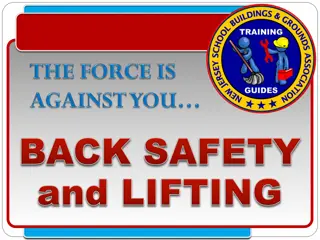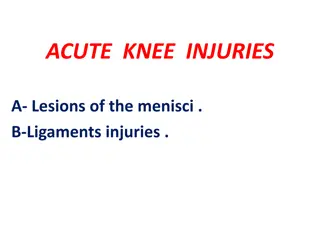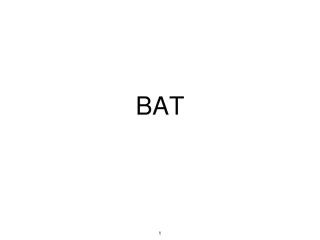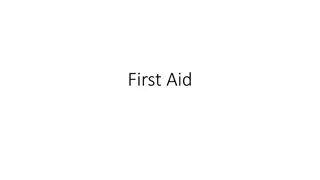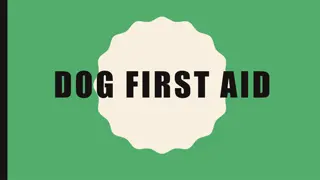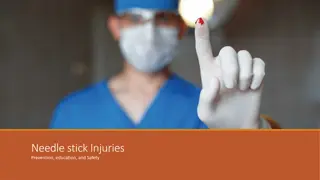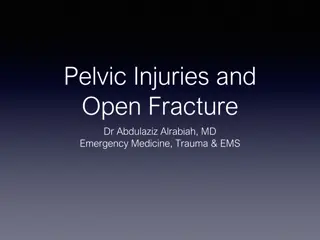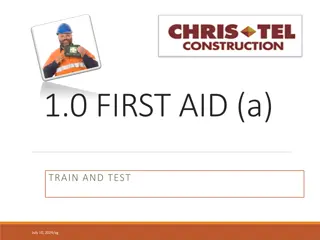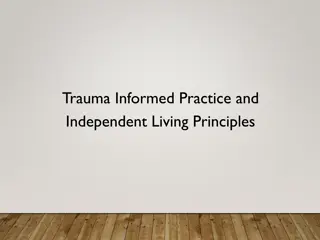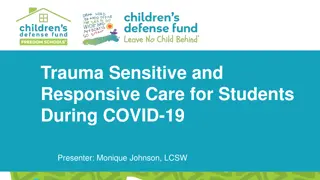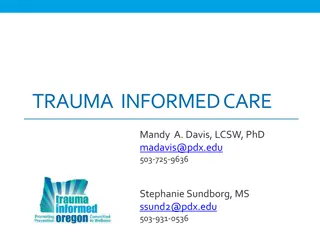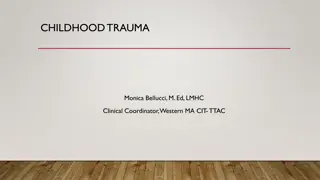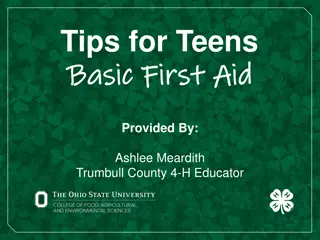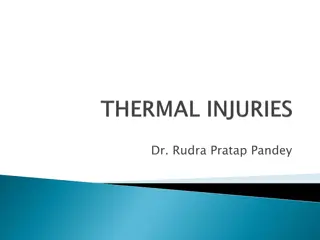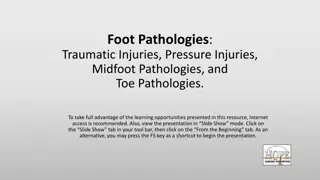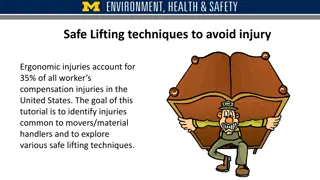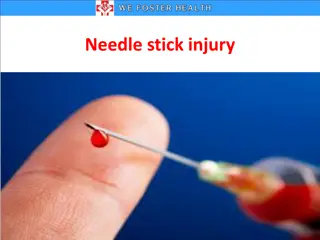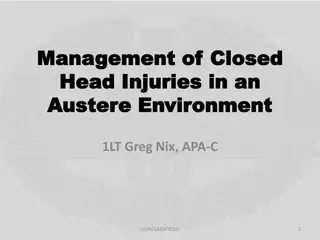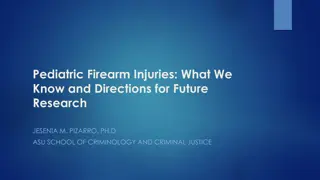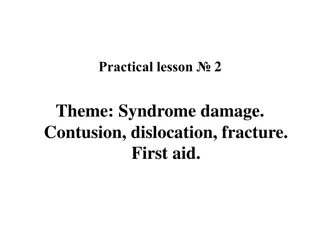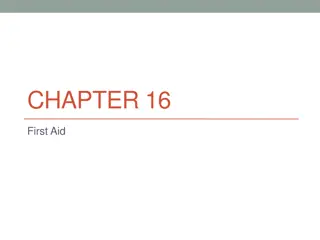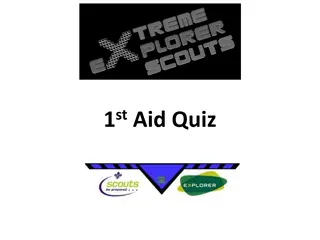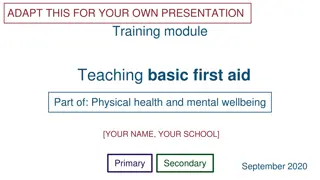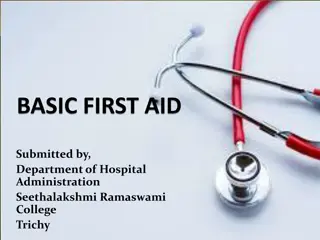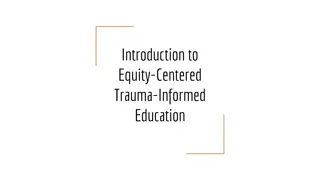First Aid Tips for Common Trauma Injuries
Learn how to manage various trauma injuries such as skull fractures, eye injuries, blowout fractures, epistaxis, mouth injuries, soft tissue injuries, open injuries, and penetrating wounds with practical first aid techniques. From treating bleeding and impaled objects to saving dislodged teeth and controlling bleeding, this comprehensive guide covers essential steps to provide immediate care before professional help arrives.
Download Presentation

Please find below an Image/Link to download the presentation.
The content on the website is provided AS IS for your information and personal use only. It may not be sold, licensed, or shared on other websites without obtaining consent from the author. Download presentation by click this link. If you encounter any issues during the download, it is possible that the publisher has removed the file from their server.
E N D
Presentation Transcript
STS 2/18/14 Trauma
Skull fractures Bleeding: Loosely cover bleeding site with sterile gauze (look for CSF) DO NOT attempt to stop blood flow DO NOT insert nasopharyngeal airway Suspect C-spine
Eye injuries Foreign objects in eye: Irrigate with saline/water (flush middle of eye to outside corner) Never attempt to remove object from cornea (only remove if object is on eyelid) Impaled stabilize with roller gauze Chemical in eye flush with saline/water for 20 min Thermal burn cover with burn dressing
Blowout fracture Fracture of orbit bone Googly eyes Check PERL Contacts should be kept in eye Unless chemical in eye Notify ALS/Tx if Pt wearing contacts Get to hospital ASAP
Epistaxis Bleeding from nose Tx: 1) Pinch nose 2) Tilt forward - Do not tilt backwards - If Pt swallows blood, may cause Pt to vomit suction 3) Apply ice
Mouth injuries Teeth dislodged Save teeth in container mixed with Pt s saliva/milk If bleeding in mouth is heavy Check airway Prepare to suction Never stick your hand into someone s mouth!
Soft tissue injury Hematoma Pool of blood collects in an area compartment syndrome May be due to blunt injury Tx: splint and CMS
Open injuries Abrasion Superficial damage no deeper than epidermis Tx: clean and apply bandaid/dressing Avulsion Flap ripped away, still attached Tx: Clean and place flap back in right position Control bleeding Apply dressing
Penetrating wound (impaled) Tx: Splint and stabilize impaled object DO NOT remove object unless Interferes with CPR Obstruction of airway Gunshot wound (GSW) Look for entry and exit wound (document) Tx: Control bleeding Provide O2 accordingly Blanket and shock position if in shock
Pneumothorax Air in pleural space Lung may collapse within seconds Sucking chest wound Open chest wound allows air into pleural space Tx: Occlusive dressing Tape 3 sides down allow air out when pressure builds Lung sounds every 5 min If lung sounds absent after applying occlusive dressing ventilate, remove dressing momentarily
Abdominal wounds Evisceration Organ protruding through abdomen Tx: Soak big trauma dressing in sterile saline solution, tape over exposed organ DO NOT touch exposed organ (infection)
Amputations Wrap severed body part in sterile gauze Place in plastic bag (zip loc) Chill with ice DO NOT allow body part to freeze or come into direct contact with ice
Neck Jugular vein injury Tx: Occlusive dressing Tape down on 4 sides Monitor respirations closely (in case of air embolism)
Thermal Burns 1st degree superficial 2nd degree dermis 3rd degree full thickness Tx: - Stop burning submerse in cool water/saline - If severe, apply burn dressing (non-adhesive) Treat for shock Pt s with critical burns lose a lot a fluids
Chemical burns Tx: 1) Remove clothing 2) For powder chemicals: brush off powder first 3) Flush with water for 20 min Electrical burns Look for entry and exit wounds Prepare to perform CPR Cardiac arrhythmia







